Francis Palms was the first to purchase land in the area,
buying it up as quickly as it became available for purchase. According to
some records, he purchased some of the land for as little as $1.25 an acre
while obtaining additional lands at little or no cost under various Acts of
Congress that made land available to homesteaders and investors.
Palms owned the acreage for several years and after the railroad was built
through the area, Palms sold his lands including Town 35 North, Range 3 East
to brothers, William and Samuel Knox, for more than $8.00 per acre! William
and Samuel were loggers from Stevens Point who had been logging in the
Willow Region and looking to expand their interests
Although the
Knox Brothers established a company town named Knox Mills, about five miles
south of what would later become Brantwood, their logging and lumbering
influenced the settlement of Brantwood as well.
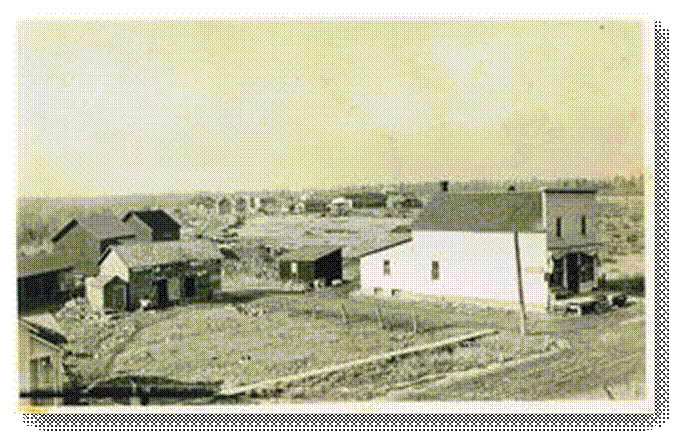 Ariel View of Brantwood
Ariel View of Brantwood
1890 - 1895
In 1890, Samuel Knox sold his share of the land to his brother, William. William began the expansion of his logging business by building a mill. The Minneapolis Sault Ste Marie and Atlantic Railroad (Soo Line) ran east and west about five miles north of William’s mill. He persuaded the railroad to build a spur down to his mill. The point where the spur joined the main railroad line was named Knox Junction. Although the exact date of changing the name from Knox Junction to Brantwood is unknown, when the post office was established there in January 1895 it was named Brantwood.
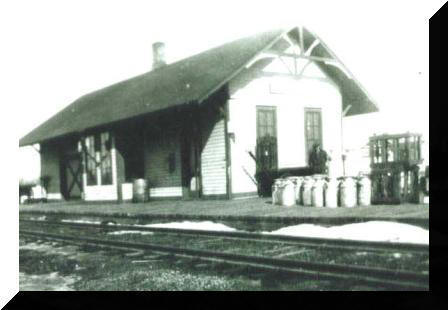 Photo:
Brantwood
Depot.
Photo:
Brantwood
Depot.
It was also in 1895 that William Knox began selling
off the cut over land by enticing more immigrant settlers to the area with
advertisements of land at bargain prices. E. H. Hobe was an agent for the
railroad and was delegated the task of encouraging buyers for the land.
Mr.
Hobe was also the Swedish-Norwegian Vice consulate and a realtor. These roles
put him in contact with Norwegians in
Iowa
and
Minnesota
where he marketed the lands belonging to William Knox and the railroad.
Finnish immigrants were also targeted with advertisements
in several Finnish-American newspapers. The ads boasted of rich agricultural
farmlands at cheap prices ready for planting. Many immigrant families bought
acreage, sight-unseen, and began their journey to another new location
inspired by dreams and fueled by hope.
Some
families traveled far distances in wagons that they had carefully packed with
their possessions. As they trekked from
Minnesota,
Iowa and
western states, they pulled along a few livestock tied to the back of their
wagons with the children walking alongside. Other families reached the area
by train, disembarking at the
Brantwood Depot. Some of these folks settled in
Brantwood while others walked the last five or ten miles
of their trip following the railroad spur south into Knox Mills.
Some
families had friends or relatives already settled in the area that opened
their doors to the newcomers and while others stayed in one of the boarding
houses that William Knox owned and operated, a few settlers purchased land
parcels that included a house that they moved right into.
As
the area became more populated, roads and schools were needed. Local taxes
had to be increased to pay for these additions and improvements. In an
attempt to exempt their lands from the tax increases, the big landowners,
including Knox, appealed to the county board. The result was a change in the
boundaries and the formation of new townships. In addition to the Towns of
Prentice, Hackett and Hill
came the Town of
Knox established on 19
November 1895.
In
1896, E. H. Hobe purchased the failing
milltown of
Knox Mills from William Knox who had removed
the sawmill
and the railroad spur. After Hobe built his own mill and had rails re-
layed, he focused on selling acreage in the community of
Brantwood.
1898
Under
Hobe’s influence, the communities of Brantwood
and Knox Mills rapidly grew simultaneously. By the spring of 1898, Brantwood had a lumberyard, warehouse, two hotels, a
boarding house, post office and Sunday school. In 1899, C. R. Sorenson
established a mercantile.
1900
Roads
were built between these two young communities that were booming with the
logging business. According to the 1900 US Federal Census, 411 men, women and
children were living in the Town of Knox.
Brantwood was home to 288 folks and Knox Mills home
to 123. Nearly half of the families were Finnish immigrants who had settled
in Brantwood while many of the Norwegian and
Swedish folks had settled in Knox Mills. The remaining census population
consisted of transient loggers and mill workers, both foreign and American
born.
Working
from sunrise to sunset to establish their homes, farms or businesses, the
immigrant families complained little as they were finally working for
themselves (for the most part) and had finally found a place to call their
own. They took pride in their work and aimed to create a safe place to raise
their young families. For the Finnish immigrants, it was
“Oma tupa,
oma lupa” an
old Finnish proverb meaning, “One’s own home, one’s own
master.”
The
communities of Knox Mills and
Brantwood continued
to grow and thrive for another twenty-some years until the logging industry
started winding down. The economy slowly changed, families moved away and
people grew old and died. With little to entice new residents to the area,
Knox Mills eventually disappeared and the area was absorbed as part of the
greater
Brantwood community.
A comparison of the Platt Books from 1910 and 1957 shows the land ownership
in the Town of Knox and how it changed.
Click on map for larger view
|
1910 Platt Book for
Town of Knox:
T. 35 N., R. 3 E. |
1957 Platt Book for
Town of Knox:
T. 35 N., R. 3 E.
|
|
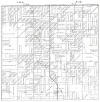 |
 |
.
The
area also has a rich and extensive political history entwined in the
Socialist and Communist
movements of the era.
More on this topic.
Brantwood
eventually changed as well as it lost local businesses to the larger
surrounding communities. Many families still live in the area farming the
lands their grandfathers and great-grandfathers cleared. A few logging trucks
still transport second growth timber from the forests and several tree farms
supply Christmas trees to southern states.
Today,
if you drive along any of the roads in the
Township of Knox,
you can find shadows of the past. Remnants of barns and silos, overgrown
pastures and patches of flowers growing wild where a farm house once stood
will remind you of a community that was once alive with activity. And on a
quiet summer night you can still hear the whistle of the
Soo
Line as it makes it way across Towns 35 and 36 North, Range East in
Price County.
With
more than 100 years of history it is impossible to tell you everything about
the communities of
Brantwood in this brief history.
Next time you are in the area, stop in and chat with the curators of
Knox Creek
Farm and Knox Creek Heritage Center, both located near the intersection of W. Knox Road and
W. Central Avenue, they will share their wealth of knowledge about the community
with you as you browse through all the historical artifacts they each have
collected.
If you have any information
you would like to contribute, please contact the County Coordinator.
. 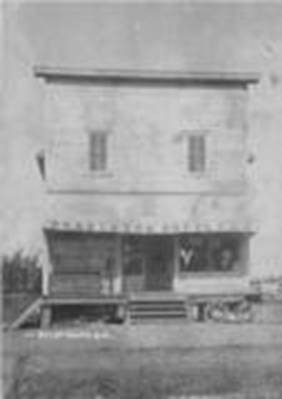 Brantwood Co-op 1956
Brantwood Co-op 1956
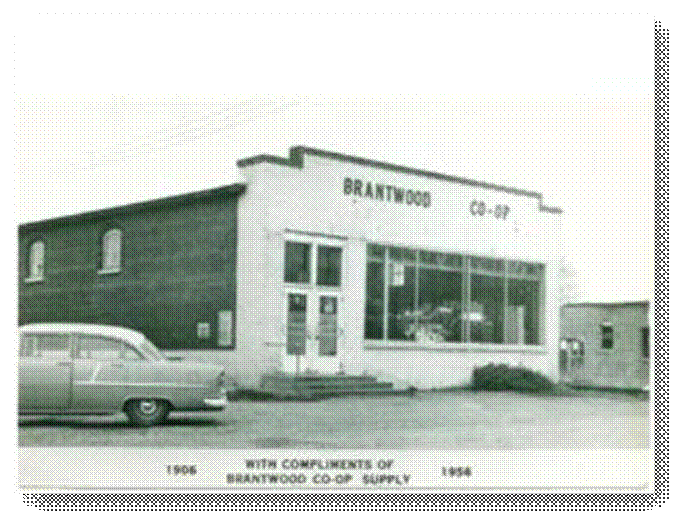 Brantwood Co-op Supply Co
Brantwood Co-op Supply Co
![Brantwood_Depot[2].jpg](../images/brantwooddepot1.jpg) BRANTWOOD TRAIN DEPOT
BRANTWOOD TRAIN DEPOT
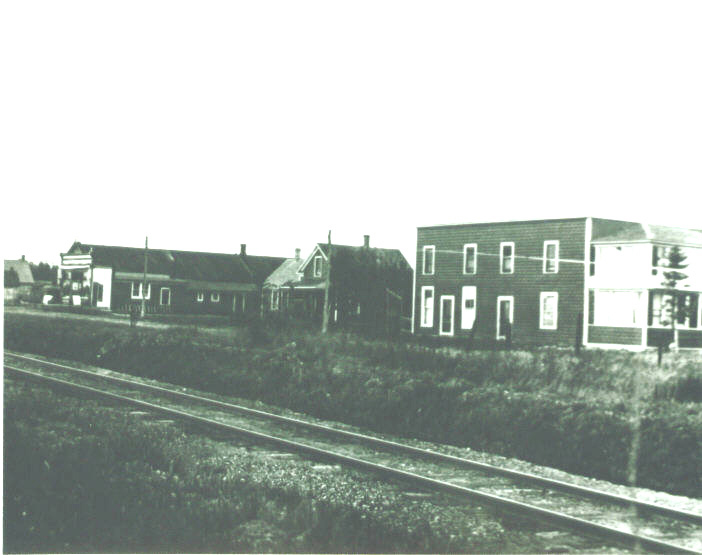 BRANTWOOD
HOTEL
BRANTWOOD
HOTEL
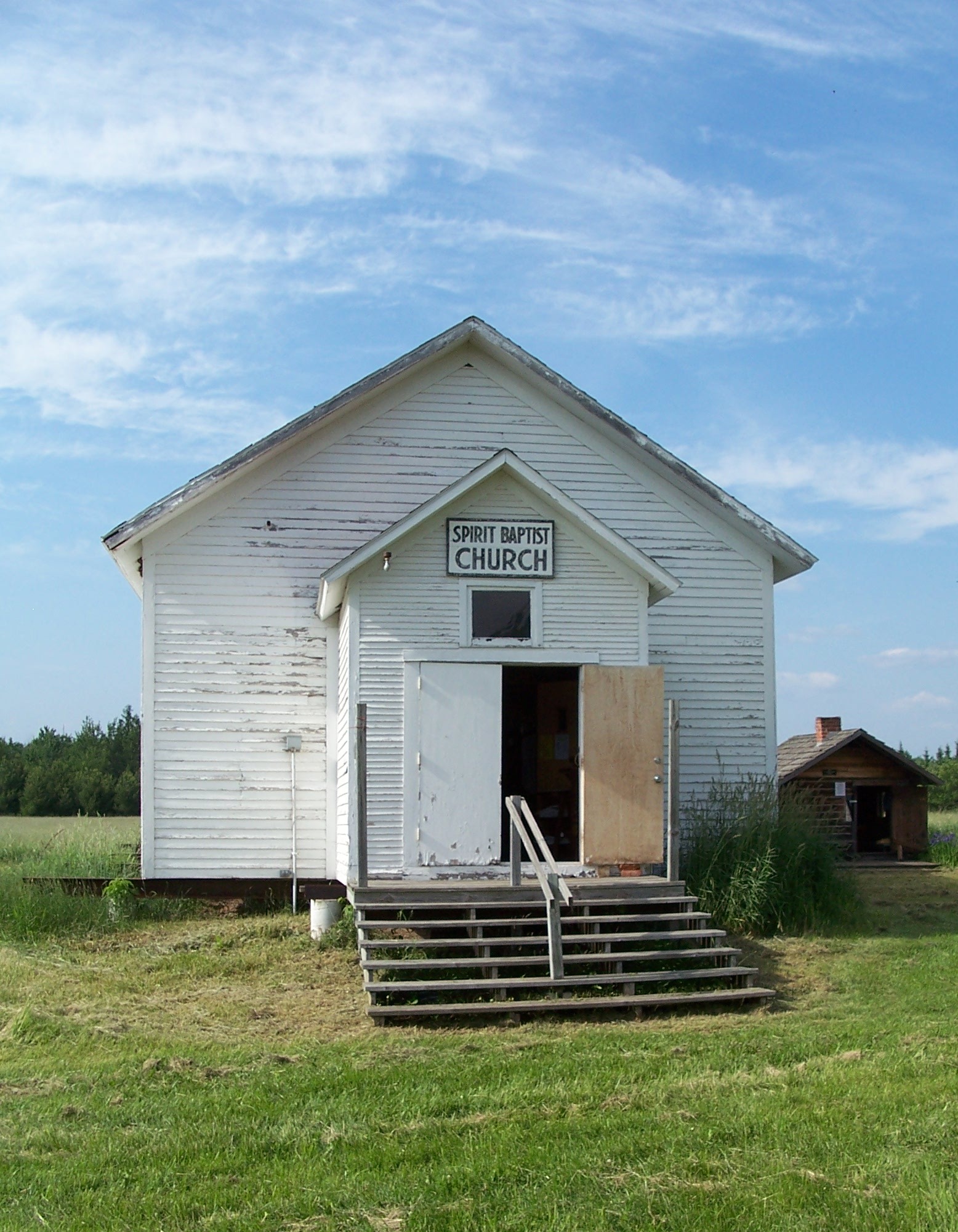 Knox Creek Heritage Center Spirit Baptist Church
built in 1890
Knox Creek Heritage Center Spirit Baptist Church
built in 1890
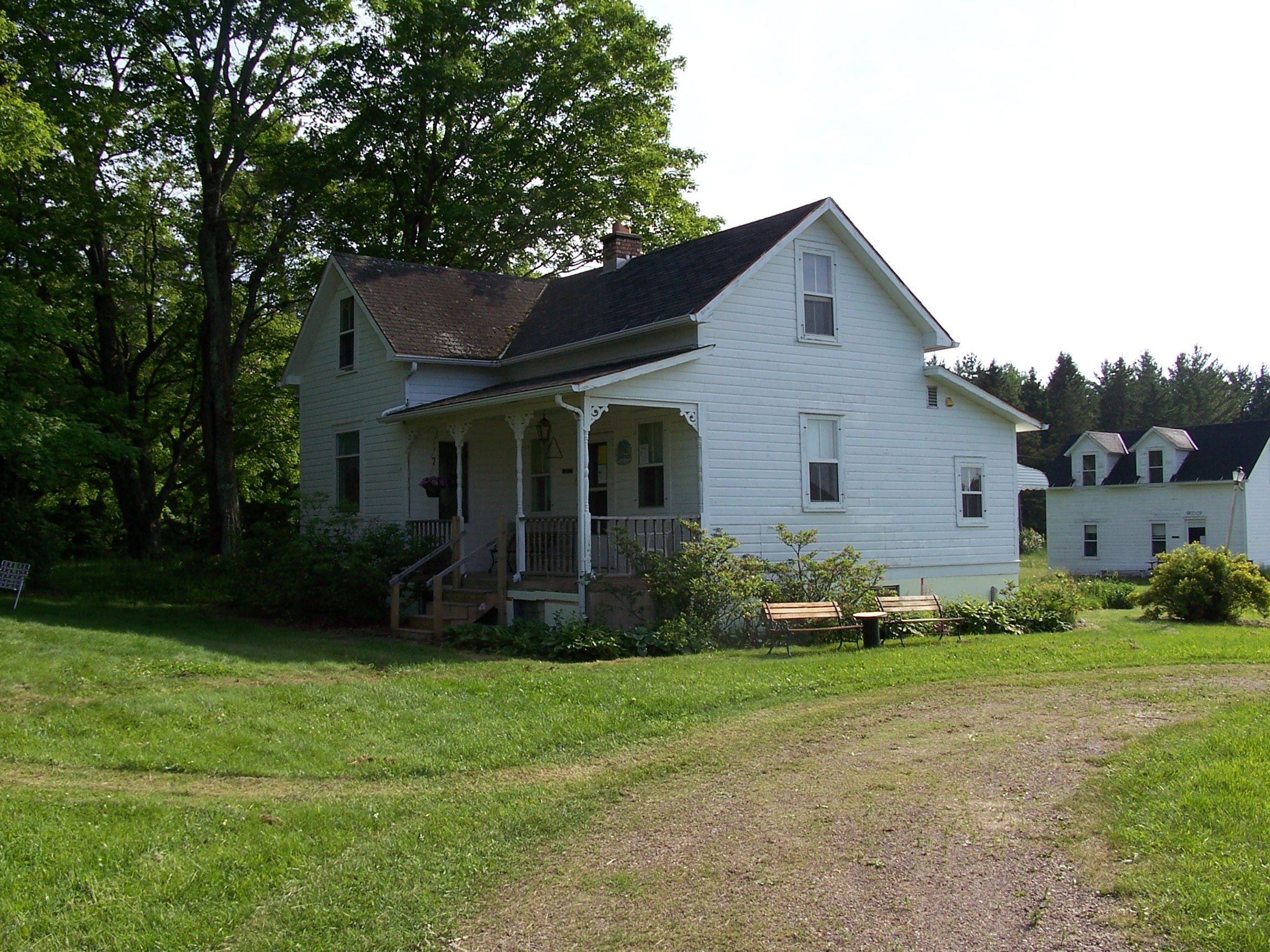 Knox Creek Heritage Center
Main Farm House built in 1900
Knox Creek Heritage Center
Main Farm House built in 1900
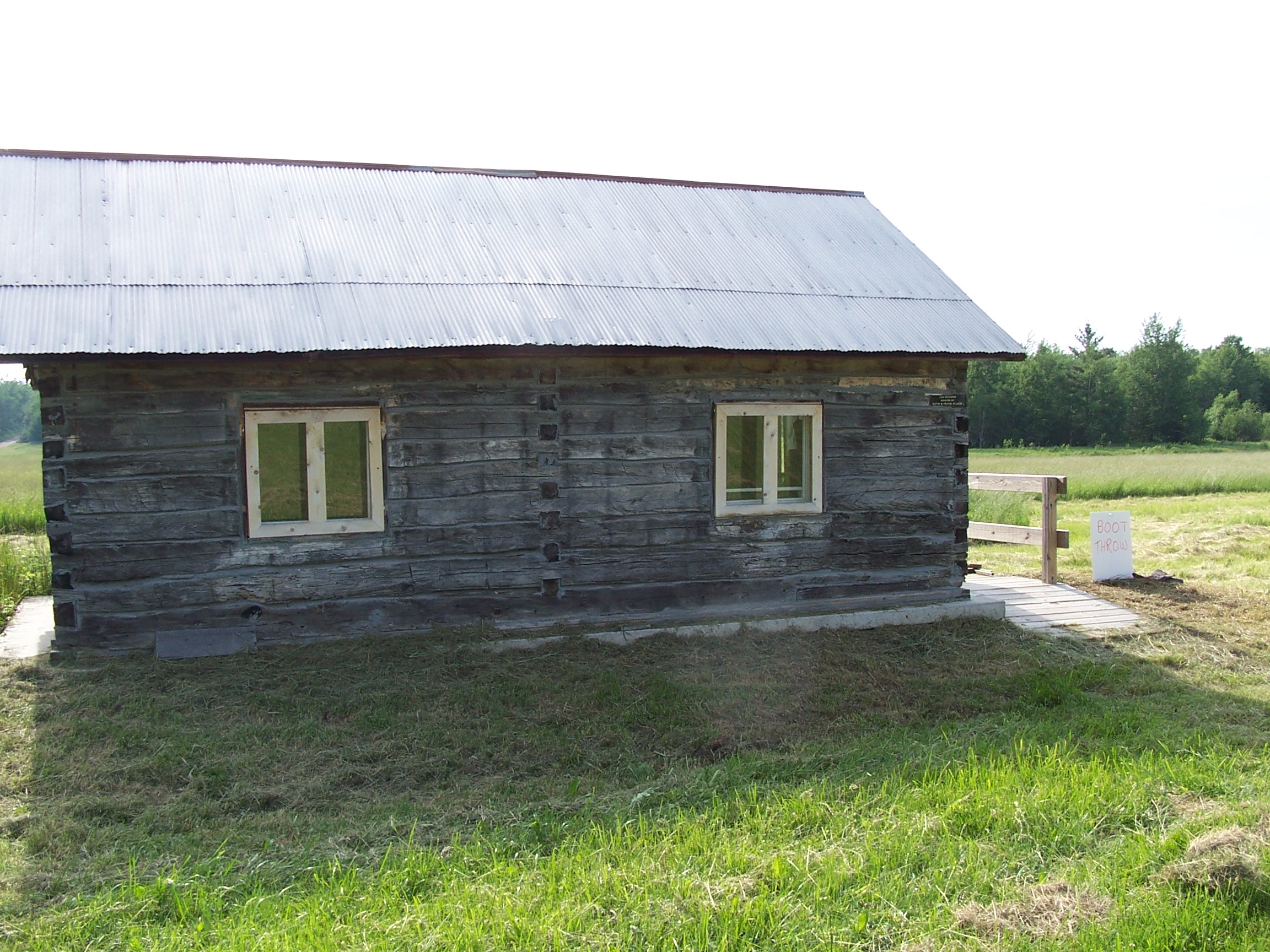 Knox Creek Heritage Center
Log House
Knox Creek Heritage Center
Log House
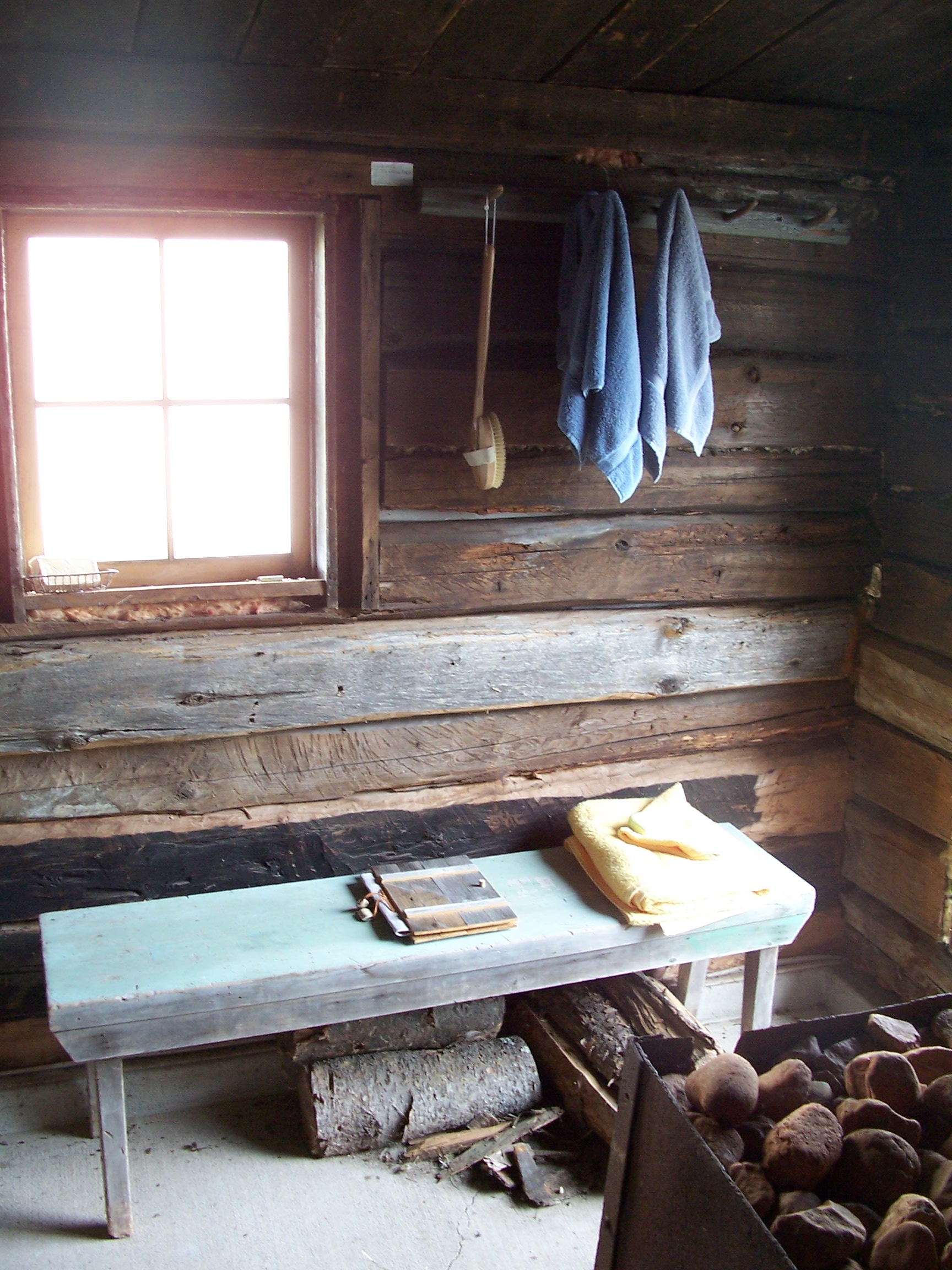 Knox Creek Heritage Center
Waahto Sauna built
1900
Knox Creek Heritage Center
Waahto Sauna built
1900
 Brantwood Socialist Hall
Brantwood Socialist Hall
![Brantwood_Pershing_School[2].jpg](../original/Brantwood_Pershing_Sch_files/image002.jpg)
Brantwood Pershing School Located on the corner of US
Highway 8 and County D, North in Brantwood, WI
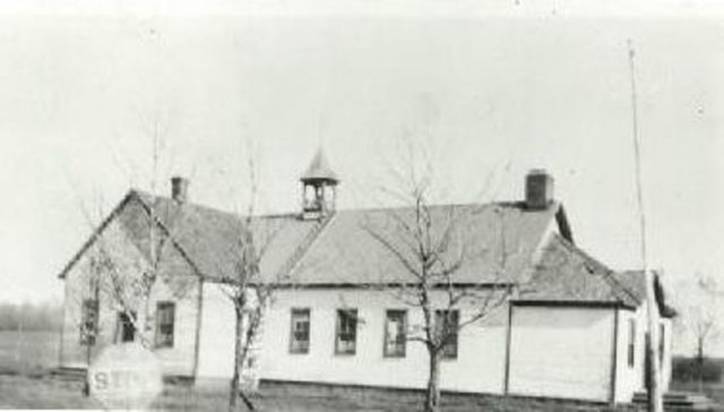
Lincoln State Graded School
Located at the
corner of US Highway 8 and Venison Drive, Brantwood, WI
2.51 miles west
of the intersection of US Hwy 8 & County D, North in Brantwood or
6.08
miles east of the intersection of US Hwy. 8 and Co. A, Prentice
Date
Unknown
Contributed by Dale Heikkinen
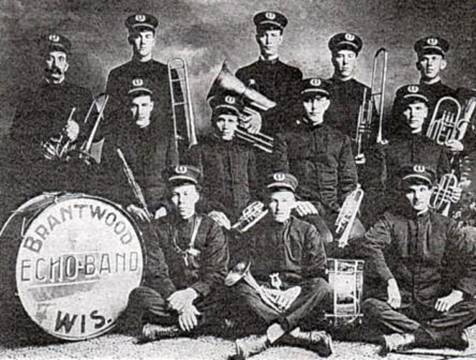
Brantwood Echo Band:
Front Row, Sitting, L - R:
Sulo Loyva, John Bergland, Alex Kaski
Middle Row L - R: Gust Komula, Waino Niemi, Matt Kaski, Emil Niemi
Back Row L - R: Alfred Sandquist, Hermmi Loski, Carl Sandquist, Mike Koppaka,
Kalle Karsela.
Contributed by Beverly Dallmann
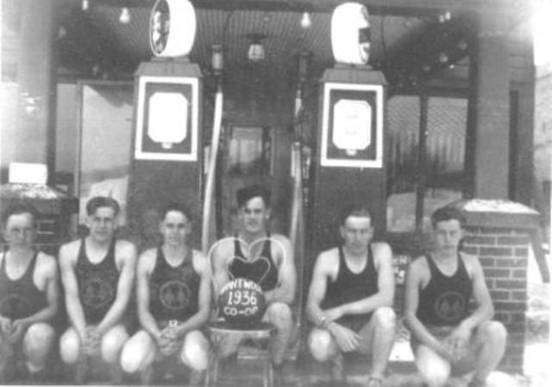 BRANTWOOD CO-OP BASKETBALL TEAM 1936
BRANTWOOD CO-OP BASKETBALL TEAM 1936

SORENSON'S HOTEL & BRANTWOOD POST
OFFICE
BRANTWOOD, WI
Politics and religion had always been
important to the Finns for it shaped and controlled their lives. It’s
no surprise then that it was also an important part of their new life in the
small Finnish communities of Brantwood, Clifford and Tripoli and surrounding areas.
Finns were socialistic by nature, that is ~
they were accustomed to working together for the benefit of their
communities. The socialist ideology of the early 20th century
spurred an effort to improve the condition of the working class and the poor
farmers.
As the Lutheran church in America grew, it became apparent
to many Finns that it was working against the Finnish immigrants by
supporting the large industries. Socialism was viewed quite differently prior
to World War I than it was in later years and had the support of many who
wanted better wages and working conditions. As the world evolved and changed, so
did the ideology.

In February 1907 a local branch of the
Social Democratic Party was organized in Brantwood with six members and in
May a Finnish branch was organized with fourteen members. The Party’s
primary focus was improving working conditions and protecting worker’s
rights so people could earn a better living. By June, the erection of a large hall
had begun just a little south of town. The Prentice
Calumet advertised a grand picnic to be held at the hall on July 4th
hosted by three local branches of the Social Democratic Parties.
The newspaper boasted the success of the
July 4th picnic as follows: “The greatest number of Socialists
ever gathered together in Price county at one time attended the picnic here
on the Fourth. Altho the day was somewhat rainy, over two hundred persons
turned out and made the day a success. The program lasted for six hours and
was good throughout. An unusual sight was the grand parade, one hundred
strong, who made the three-mile march
in good order, singing all the way, with two large red flags and the
stars and stripes heading the procession. Over $30 was cleared.”
In 1941, John I. Kolehmainen and George W.
Hill interviewed many Brantwood Finns while doing research for their book, A
Haven in the Woods The Story of the Finns in Wisconsin (Arno Press,
1979). Although they wrote about
several Finnish communities in Wisconsin,
the book gave a glimpse of the mind-set of the Brantwood Finns who helped to
shape the community during the first half of the 20th century.
Quotations in the following paragraphs are from their book unless otherwise
noted.
Even before the Great Depression slammed
into America,
Finnish immigrants were working hard to make a better life for themselves in
the land of opportunity. Three working class leaders in the world: Eugene V
Debs, William D Haywood and Lenin shared their visions of a socialistic
commonwealth “in which the state would
efficiently and benevolently operate the economy for the benefit of all”
and Finns nationwide responded to the ideology.
The movement began as early as 1905 when
socialist organizers poured into the state “proclaiming the gospel of freedom”. “The Wisconsin Finns disagreed
violently among themselves whether Socialism was a red ogre or a gallant
knight-errant.” Brantwood Finns were as deeply affected by
differences in opinion as were Finns in the larger cities in Wisconsin.
Religious leaders feared the socialist
ideas and tried to scare Finns away from it with threats of fire and
brimstone. It created a separation within communities as some Finns remained
loyal to the Lutheran church who supported capitalist ideals and activities
while others turned their backs to it. In some communities this separation
led Finnish immigrants to be separated into “churched Finns” and
“un-churched Finns”. The ‘un-churched’ Finns
organized and built the socialist halls of Brantwood and Clifford.
In 1908, an article published in the
Prentice Calumet newspaper on April
10th attempted to clarify the differences between the Socialist
and the Communist party ideals:
“People
have Socialism and Communism mixed. Communism stands for the ownership of all
things by all the people; all things to be produced in common and used in
common. Socialism stands for public ownership of public property, that is,
all things the people depend on, which is the machinery of production and
distribution, and private ownership of private property, which is anything
used privately. If the government owned the trusts, with pure democratic
control, we would have social democracy which is socialism.”
As the socialist movement grew within the
Finnish communities across the nation, the Finns built one of the largest
labor movements in the world.
By
the autumn of 1912, another local branch of the Socialist Party built a hall
in Brantwood that opened on October 6th. In addition to an address
to the community members by Carl D. Thompson, the Social Democratic candidate
for governor of the state, the Brantwood Echo Band provided music for a grand
ball.
The Socialist movement spread to every
Finnish community in the state however, the Brantwood-Clifford community
seemed to be one of the strongest for several years. In 1912 and 1914, the
Socialist Party won every town office position.
The Finnish Socialists enjoyed entertaining
activities as much as political ones. Their political meetings frequently
included Finnish songs, recitations, games and dancing along with dramatic
plays that fascinated community members and drew much community support.
The Finns involved in these activities were
deeply focused on preserving their Finnish culture and language to the extent
that they were often criticized for their lack of focus on the class
struggle. These Finns became known as “Hall Socialists” or the
“Hall Finns”.
All across the Midwest
disagreements over the level of socialism raged throughout 1914. The
Proletarian Revolution was born of the Russian Revolution and moved many
Finns toward Communism. Superior’s
Finnish newspaper, the Työmies, “…took the lead in calling for the abandonment of the
American Socialist Party and the adoption of the Communist program”.
In 1920 and 1921, twelve of the Wisconsin socialist parties turned to the Communist
party with the intent to further their working class struggle with the new
power they thought to acquire with the Red Party. They were unaware of the severity of
the newer communistic ideology.
As the communist movement heated up, many
Finns realized even more that they were less interested in the proletarian
movement and more interested in nurturing their communities with cultural and
social endeavors while maintaining their own language.
When they realized the Communist Party
would take over their businesses, halls and newspapers and absorb them into a
greater movement they realized the blatant violation of their social
democratic procedures and hesitated.
This hesitation allowed many Finns to
reconsider what it was they really wanted for themselves and their families
and caused them to change their minds about joining the Communist Party and
signing membership cards. However, several Finns remained committed to the
Communist party well into the 21st century.
To
learn more about the Socialist and Communist movements as well as the
Emigration of Finns to Karelia, click on the titles of the following
articles.
Disillusionment on the Grandest of Scales:
Finnish-Americans in the Soviet Union, 1917-1939
By: Emily Weidenhamer
“We were not traitors. It has to be understood that we were the children
of idealists. Their idealism was worded in communist ideals—that there
should be equality for all.” —Mayme Sevander [10]
The
Finnish-American community in the United States was often politically
radical, heavily influenced by left-wing socialist and communist movements.
This trend was rooted, in part, in the Finnish national awakening. The
national revival took place from 1885 to 1907, a time period corresponding
to the main wave of Finnish immigration to America. Included in this
cultural revival were strong socialist, temperance, women’s rights, and
workers’ movements. These movements also took root among the Finnish émigrés
in America.[11] In America, Finnish immigrants often labored in lumber camps
or mines under terrible working conditions. Their anger at the exploitation
they and other immigrants suffered from found its outlet in radical
political movements—the labor union movement, socialism, and eventually
communism.[12] At the time, workers across the country were unionizing, and
Finns joined them in demanding better working conditions and pay. Finns
played large parts in major miners’ strikes in the Mesabi Range of northern
Minnesota in 1907 and in Michigan’s Copper Country in 1913.[13]
By
1903, forty Finnish-American clubs had formed the Imatra League and had
begun to take steps to promote socialist ideas among the clubs. The Imatra
League had 23,697 members in 1908, almost all of whom were Marxist in
orientation.[14] A Finnish-American Workers’ League was also founded in
August 1904. In 1906, delegates at a conference in Hibbing, Minnesota,
formed the Finnish Socialist Federation and affiliated themselves with the
American Socialist party. The initial group was formed from socialist clubs
with approximately 2,500 members. A few years later, in 1912, the Federation
had grown to 13,667 members.[15]
The Federation’s activities centered
on “Finn Halls.” These halls—the cultural centers of the Finnish-American
community—became political centers as well. There, Finns could dance, watch
theater, and absorb and discuss leftist politics.[16] Many of the children
of Finnish-American socialists were raised as socialists from birth. They
attended the Finnish halls regularly with their parents, but they also
participated in summer camps, demonstrations, protests, and non-religious
Finnish Sunday Schools.[17]
The Finnish Socialist Federation on
several occasions experienced dissension and even splits. After the 1913
copper miners’ strike in Michigan, many Federation members joined the
Industrial Workers of the World (I.W.W.). The Federation was strongly
influenced by communism after the founding of the Communist Party in the
United States. The socialist and communist Finns split over these
influences, and communist Finns formed their own Finnish halls.[18] In 1923,
the Federation officially affiliated itself with the Workers’ Party, the
public organization of the Communist Party in the United States.[19]
Federation members made up about 40 percent of the Workers’ Party in the
1920s.[20]
By 1921, four major Finnish-American radical newspapers
were printed regularly: Työmies (Working Man), Raivaaja (Pioneer), Toveri
(Comrade), and Eteenpäin (Forward). These publications represented a range
of political views across the leftist spectrum.[21] Työmies was the official
mouthpiece of the Finnish Socialist Federation, and later of the Finnish
section of the Workers’ Party.[22] Eteenpäin and Toveri, like Työmies, were
linked to communism. Raivaaja was the newspaper of the Social Democrats, a
group that broke from the Federation and retained its links to the American
Socialist Party. Carl Ross estimates the circulation of the Finnish
Communist press alone to have been nearly 40,000 at its peak; if the
circulation figures of Raivaaja and Industrialisti (the I.W.W. organ) are
added, the total circulation of the Finnish radical press numbered around
60,000. Because newspapers are almost always shared with others, this
represents a substantial radical movement within an immigrant community of
roughly 400,000.[23]
Not all Finns in the United States, of course,
were members of radical political movements. Many Finns were “Church
Finns”—members of the Lutheran Church, far more conservative, and advocates
of temperance.[24] These Finns did much to distance themselves from their
more radical brethren. In the wake of the Mesabi strike of 1907, for
example, the conservative Finns were so opposed to the striking miners’
socialism that they established the “True Finns Movement”
(Tosi-suomalaisliike) in February 1908. The movement claimed to be the true
voice of Finnish-Americans and asked the mining companies not to judge all
Finns as radical. They accused Finnish-American socialists of devastating
the reputation of Finns everywhere and blamed them for the miners’
“blacklist.” The leaders of this movement reportedly recommended that the
U.S. Department of Immigration deny Finnish socialists entrance to the
country.[25]
Despite the divisions within the community, speakers
traveling among Finnish-American communities to recruit immigrants to
Karelia found a welcome there. Americans and Canadians were recruited
primarily by two organizations: Amtorg, the Soviet trade mission in New
York, and Soviet-Karelian Technical Aid (Neuvosto-Karjalan Teknillinen
Apu).[26] Mayme Sevander’s father was head of Soviet-Karelian Technical Aid
for a time. She recalls that he told Finns in his recruiting speeches that:
Karelia …needs strong workers who know how to chop trees and dig ore and
build houses and grow food. Isn’t that what we Finns have been doing in the
United States for the past thirty years? And wouldn’t it be wonderful to do
that same work in a country that needs you, a country where there is no
ruling class, no rich industrialists or kings or czars to tell you what to
do? Just workers toiling together for the common good.[27]
The
recruiting speeches were often the source of a person’s “Karelian fever.”
Estimates of the number of Finnish-Americans who caught “Karelian fever”
vary, but a widely accepted figure is approximately 6,000.[28] The fever was
particularly concentrated and widespread in 1931 and 1932. The vast majority
of immigrants arrived in Soviet Karelia in these years; few immigrants
arrived after 1933.[29]
Many groups had farewells appealing to
communist sentiment printed in Finnish newspapers:
We the
undersigned, leaving behind this country of capitalistic exploitation, are
headed for the Soviet Union where the working class is in power and where it
is building a socialistic society. We appeal to you, comrades, who are
staying behind, to rally round communist slogans, to work efficiently to
overthrow capitalism and create the foundation of a Republic of Labor.[30]
In order to be accepted to go to Soviet Karelia, potential emigrants did
not have to be members of the Communist Party. They only had to be in good
health, be willing to work hard and endure difficulties, and receive a
reference from a Communist-affiliated organization.[31] All the emigrants,
however, had in common at least an openness to consider new, often utopian
ideas.[32]
It is a matter of some debate within the historical
community whether ideology or ethnicity more strongly motivated the Karelian
fever. Alexis Pogorelskin argues that ethnicity was the primary factor both
for the recruitment of the emigrants and for the emigrants’ decisions to
leave.[33] Mayme Sevander and Richard Hudelson, on the other hand, argue
that ideological motivations for emigration outweighed nationalist ones and
that Finnish ethnic identity “did not exist in isolation from ideological
factors.”[34]
Two facts, however, seem to indicate that neither
nationalist desires nor Marxist ideology can explain the Finnish-Americans’
emigration completely. First, recruiters to Karelia did not target
churchgoing, Suomi Synod Finns. The recruiters generally spoke in Finn
halls, where radical politics reigned supreme. This seems to indicate that
it was not simply Finns who were wanted in Karelia, but a certain kind of
Finns—those who would support the aims of the Soviet Union. Second, it was
indeed Finnish Communists (or Communist sympathizers) who were targeted for
recruitment. Recruiters did not target any other nationality for settlement
in Karelia; they preferred Finns.
Arguing that nationalism was the
primary factor, as Pogorelskin does, ignores the fact that most Finns in the
United States did not go to Karelia. If nationalism were such a compelling
factor, then one would expect a larger portion of the entire
Finnish-American community to emigrate. Arguing that political ideology was
the dominant motivator, as Hudelson and Sevander do, also leaves something
to be desired. There were far more Finnish Communists in the United States
than the emigrants who went to Karelia. This seems to indicate that a
complex range of factors—ideology, ethnicity, and perhaps others—united to
create the Karelian “fever” in the Finnish-American community.
|
Price County Finnish-American Emigrants to
Soviet Karelia in
1930s |
| The following
list of names from Price County communities
was extracted from the Laiho
List. |
|
SURNAME
|
First
|
Residence
|
Date
|
S-K
Data
|
|
AHO
|
Edward
|
Brantwood, WI
|
3/2/1932
|
X -
Missing
|
|
AHO
|
Aino
|
Brantwood, WI
|
3/2/1932
|
X -
Missing
|
|
AHO
|
Leo
|
Brantwood, WI
|
3/2/1932
|
X -
Missing
|
|
AHO
|
John
|
Brantwood, WI
|
3/2/1932
|
X -
Missing
|
|
AHO**
|
Waino
|
Brantwood, WI
|
3/2/1932
|
X -
Missing
|
|
AHO**
|
Lyyli
|
Brantwood, WI
|
3/2/1932
|
X -
Missing
|
|
AHO**
|
Eugene
|
Brantwood, WI
|
3/2/1932
|
X -
Missing
|
|
GRONROOS
|
Victor
|
Tripoli, WI
|
4/5/1932
|
X -
Missing
|
|
GRONROOS
|
Saima
|
Tripoli, WI
|
4/5/1932
|
X -
Missing
|
|
GRONROOS
|
Leslie
|
Tripoli, WI
|
4/5/1932
|
X -
Missing
|
|
HAUTA**
|
Axel
|
Clifford, WI
|
9/26/1931
|
X -
Missing
|
|
HAUTA**
|
Aili
|
Clifford, WI
|
9/26/1931
|
X -
Missing
|
|
HAUTA**
|
Richard
|
Clifford, WI
|
9/26/1931
|
X -
Missing
|
|
HAUTAMAKI
|
Edwin
|
Clifford, WI
|
1/1/1932
|
X -
Missing
|
|
JALKANEN
|
Adam
|
Brantwood, WI
|
3/2/1932
|
X -
Missing
|
|
JALKANEN
|
Clyde
|
Brantwood, WI
|
3/2/1932
|
X -
Missing
|
|
JALKANEN *
|
Tyyne
|
Brantwood, WI
|
3/2/1932
|
X -
Missing
|
|
JALKANEN *
|
Leslie
|
Brantwood, WI
|
3/2/1932
|
X -
Missing
|
|
KAARTUNEN***
|
Leo
|
Brantwood, WI
|
9/11/1932
|
X -
Missing
|
|
KAARTUNEN*** |
Walter |
Brantwood, WI |
9/26/1931
|
R - Returned |
|
MAKI
|
John
|
Brantwood, MN
|
5/17/1933
|
X -
Missing
|
|
MAKI
|
William
|
Brantwood, MN
|
5/17/1933
|
X -
Missing
|
|
POYHONEN
|
Impi
|
Brantwood, WI
|
3/2/1932
|
X -
Missing
|
|
POYHONEN
|
Katri
|
Brantwood, WI
|
3/2/1932
|
X -
Missing
|
|
POYHONEN
|
Isaak
|
Brantwood, WI
|
3/2/1932
|
X -
Missing
|
|
RIIHIMAKI *** |
Walter |
Brantwood, WI |
9/26/1931 |
R - Returned |
|
RIIHIMAKI *** |
Hulda |
Brantwood, WI |
9/26/1931 |
R - Returned |
|
RIIHIMAKI *** |
William |
Brantwood, WI |
9/26/1931 |
R - Returned |
|
RIIHIMAKI *** |
Anna |
Brantwood, WI |
9/26/1931 |
R - Returned |
|
RIIHIMAKI *** |
Matti |
Brantwood, WI |
9/26/1931 |
R - Returned |
|
ROSENSTAND
|
Delbert
|
Tripoli, WI
|
3/2/1932
|
X -
Missing
|
|
ROSENSTAND
|
Francis
|
Tripoli, WI
|
3/2/1932
|
X -
Missing
|
|
ROSENSTAND
|
Aino
|
Tripoli, WI
|
3/2/1932
|
X -
Missing
|
|
ROSENSTAND
|
Christian
|
Tripoli, WI
|
3/2/1932
|
X -
Missing
|
|
SAARI
|
Eino
|
Brantwood, WI
|
7/3/1932
|
X -
Missing
|
|
SAARI
|
Nestor
|
Brantwood, WI
|
8/11/1932
|
R-Returned
|
|
SAARI
|
Nikolai
|
Brantwood, WI
|
8/11/1932
|
R-Returned
|
|
|
|
* Jalkanens
and Korpelas
-
Leslie and Clyde
Jalkanen, along with their mother, Tynne (?) left Russian and after
spending four years in Finland,
returned to the United
States in 1940. They
settled in the Finnish community of Voluntown, C.
T. Adam apparently stayed in Russia.
-
The Korpelas from
Clifford also immigrated to Karelia however they had moved to Owen, WI prior
to that and therefore are not recorded in the above list;
-
Toivo
Korpela, who had live in Clifford and later moved to Owen, WI was
the first of the Korpelas to immigrate to Karelia leaving
on 02 Mar 1932 (on the same day as the Jalkanens and probably with
them).
-
Toivo coaxed his
parents, Gust and Marie Korpela, and his brothers, Bill and Oliver, into
immigrating to Karelia also.
The family sold everything they owned and left Owen, WI with
Gust’s brother, Kalle (Carl) Korpela and Kalle’s wife, who was from Tripoli;
-
The conditions in Russia were
so harsh that the families obtained passes to ‘visit’ Finland and
of course never returned to Karelia.
-
Kalle and his wife
stayed in Finland.
-
Gust, Maria and
Oliver stayed in Finland long
enough to earn money to return to Owen, WI and
later moved back to Clifford.
-
Toivo and Bill
returned to the U.S. and
took up residence in New
York City.
The
information was contributed by Judy (Korpela) Schoch – June 2009. Thanks,
Judy!
------------------------------------
** Ahos and Hautas (Emigrants to
Soviet Karelia from U.S. in 1930's)
-
Waino Aho stayed in Karelia. He lived in
Petroskov and died there.
-
Lyyli (nee Maki) Aho visited the Kristo
Maki family in Brantwood but went back to Karelia.
-
Eugene Aho, son of Waino and Lyyli, die in
Matrosa of a ruptured appendix. His wife, Aune, was the postmaster
there.
-
Elaine Aho, born in Matrosa died in 2000.
-
Axel Hauta was in the Russian Army. he was
a neighbor to John Braski when he lived in Brantwood. He died
in Petroskov.
-
Aili (nee Nurmi) Hauta lived in Karelia.
John Braski visited her in 1968.
-
Richard Hauta moved from Karelia to
Jyväskylä, Finland with his wife Maria. Marcie Braski visited them in
1998.
-
Taina Hauta was born in Matrosa, Karelia.
She is the cousin of John Helander and Dorthy Hakko. She moved to
Kajaani, Finland where Marci Braski visited her in 1998.
This information was
contributed by Marcie Braski - March 2011. Thanks, Marcie!!
-------------------------------
*** Kaartunens &
Riihimakis
-
Mr. & Mrs. John Kaartunen, the parents of
Leo and Walter, allegedly emigrated to Karelia also but their names are
not on the Laiho List.
-
Bill Hoffman has a Russian certificate
from Matroosa translated as follows: "With
lightening speed we will complete the five year plan in four years.
Comrade Walter Riihimaki of the (Walter) Kaartunen Brigade is awarded
the honorary title of shock worker in the fourth year of the Five Year
Plan and builder of the socialism proving himself on the lumber front in
socialistic competition for the raising of labor productivity."
-
Hulda Riihimaki was the daughter of Moses
and Hanna Lampi of Brantwood, WI.
-
The Riihimaki family (and Walter
Kaartunen?) returned to Brantwood in the fall of 1933 and moved to
California in the spring of 1934.
-
Oliver Korpela stated that a few days
after he and his parents arrived in Petroskoi they were trucked to
Matroosa where there were mostly Finns from the States and Canada.
This information was
contributed by Bill Hoffman - April 2011. Thanks, Bill!
The Canadian Finns in Soviet Karelia in the 1930's (Excerpt)
by Reine Kero
The objective of the Soviet Union’s first five-year plan was to achieve maximum self-sufficiency. The forest resources of the Soviet Union in the 1920s were enormous. Most of the forests were situated, however, in areas where exploiting the wood was difficult, at least for purposes of foreign trade. From the point of view of their locations, the best forests were to be found in Soviet Karelia, from whence timber could be transported with relative ease along the waterways to western European markets. For this reason Karelia, which was otherwise a backward area, was of particular importance with regard to carrying out the five-year plan.
The start of the first five-year plan meant that the production goals of Soviet Karelia were raised dramatically; they were set so high that reaching them was not possible with local manpower. According to information in Soviet Karelian newspapers, from 30,000 to 50,000 more workers were needed in 1931. Under these circumstances, the leader of the Karelian Autonomous Soviet Republic, tried to ensure that as many as possible of the new workers would be Finnish-speaking. As a result, Finnish-speaking workers came from southern Russia, Siberia, Ingermanland, Finland, the United States and Canada.
The manpower to be recruited from Canada was valuable not only because it was Finnish-speaking, but also because in Canada there were plenty of skilled forest workers thought to be capable also of teaching effective working methods to the rest of the population of Soviet Karelia. The recruiting was done by an office, known as Technical Aid to Soviet Karelia. An agreement was made for 50 to 70 experienced forest workers from Canada and the United States to be allowed to go to the Soviet Union. The Work Unit would act as “shock troops”, who would show how effectively forest work could be carried out.
The “ambassador” of the Canadian Finns was Comrade Karppinen, who came to Karelia in the spring of 1930. In the autumn, he was followed by 26 Canadian and four American Finnish forest workers who made an agreement with the bureau responsible for forest work at the beginning of November to fell 14,000 cubic metres of pulpwood (about 21,000 cords), transport it to a tractor road and load it on tractor sleds.
Matroosa was a kind of model forestry area and attempts were made there to organize timber cutting and processing on the basis of the methods taught by the Canadian and American Finns.
Thank you Bill Hoffman for contributing this information!


 Photo:
Brantwood
Depot.
Photo:
Brantwood
Depot.
 Brantwood Co-op 1956
Brantwood Co-op 1956 Brantwood Co-op Supply Co
Brantwood Co-op Supply Co![Brantwood_Depot[2].jpg](../images/brantwooddepot1.jpg) BRANTWOOD TRAIN DEPOT
BRANTWOOD TRAIN DEPOT BRANTWOOD
HOTEL
BRANTWOOD
HOTEL
 Knox Creek Heritage Center
Main Farm House built in 1900
Knox Creek Heritage Center
Main Farm House built in 1900 Knox Creek Heritage Center
Log House
Knox Creek Heritage Center
Log House Knox Creek Heritage Center
Waahto Sauna built
1900
Knox Creek Heritage Center
Waahto Sauna built
1900 Brantwood Socialist Hall
Brantwood Socialist Hall![Brantwood_Pershing_School[2].jpg](../original/Brantwood_Pershing_Sch_files/image002.jpg)


 BRANTWOOD CO-OP BASKETBALL TEAM 1936
BRANTWOOD CO-OP BASKETBALL TEAM 1936